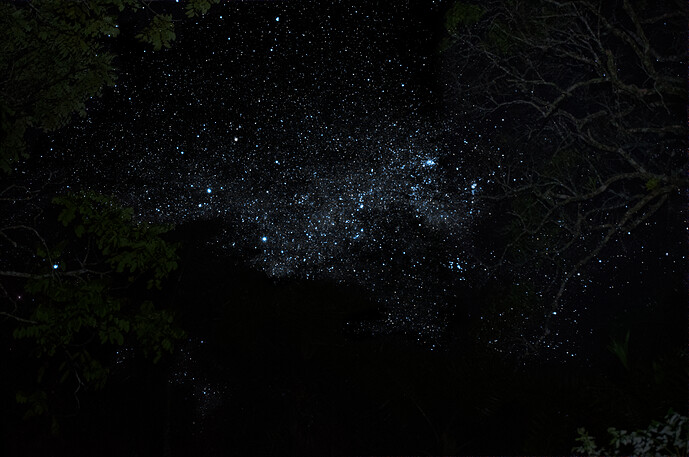Hi!
I’m thrilled to have been able to capture a piece of the Milky Way for the first time, and I would like to share with you either the result, as well as my joy and experience (long text below).
First, a disclaimer: I’m not an astrophotographer, just an amateur who happens to have a decent SLR (Nikon D7000), a very cheap tripod, and enjoys space.
I basically spent a whole night to come to this, starting from around 1:00 am up to 4:00 am, when the astronomical sunset began → time to switch off the “observatory”, and enjoy the Sunrise and birds waking up.
The main issue I had was acquiring focus. I couldn’t use the camera’s back screen because it didn’t show anything beside pitch black (I have to read the manual). From what I read somewhere, the best, simple way is to frame a star in the screen then zoom in (with the screen buttons) and manually adjust the focus.
Because of that, it was a trial and error thing until I started shooting, around 3:00 am.
From there, I took thirty-six light frames of 5-second exposure time, ISO 1600, and three black frames. No bias.
One thing that really helped me was a head-light I recently bought. It came with an alternative red light, which didn’t hurt my eyes and didn’t seem to affect the exposure.
After a couple of days, I processed the frames with Siril, and it was smooth. I followed the tutorial published here in the forum. It refers to an older Siril version, but still applies.
For the first time, Siril was capable of automatically detect stars from my frames!
I like the result very much.
I just hope that what is show is not just a bunch of noise that’s tricking me as if I am looking to stars. I don’t think so, by comparing it with a sky chart, but… (if anyone is interested in double check that, I can provide the fit file)
Sorry for the looong post.
PS.: Forgot to mention, during one of the exposures, I pointed my head light (the White lamp, this time) to the trees above, to have a foreground image to merge with the sky image produced by Siril. This was done in Gimp.
PS.: It also helped me to count on Photo Pills app (Android and iPhone). I used it just to check the galactic center visibility window. Actually, it was useless, because the tight window to the sky didn’t allowed me to see the galactic center, something I discovered later, at home. By the way, the main reference here is the Crux constellation, and two star clusters: C91 and C92. (thrilling!)
I recommend the experience, for the insomniacs
